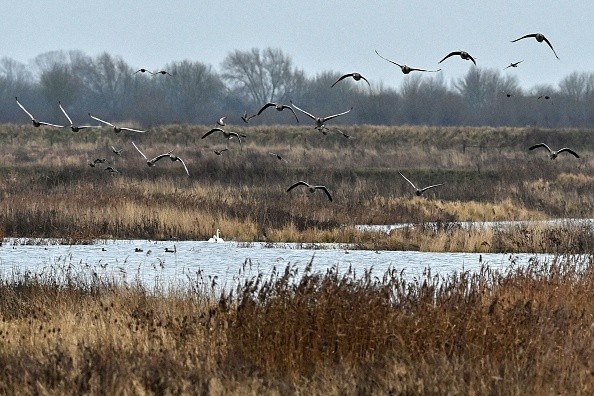A quarry in the east of England has been reclaimed by nature and is being turned into a massive wildlife refuge.

The Return of Endangered Birds
Recently, the UK's most endangered species, the secretive bittern, found refuge in the boggy plain of the Fens outside Cambridge, thanks to its reedbed wetlands.
The RSPB's Ouse Fen Nature Reserve located about 120 kilometers north of London has been reclaimed by nature and transformed into a refuge for critically endangered birds in the United Kingdom, according to Phys.org.
With its brown streaked plumage and booming springtime cry that sounds like someone blowing over the top of a bottle, the thick-billed heron is now on the Amber list, where it is less critical but still vulnerable.
Ouse Fen Nature Reserve senior site manager Chris Hudson says it's a proof of how large-scale decisive action at large scale can move species off the Red list.
The elusive bird was nowhere to be seen when AFP arrived on a cold and wet January morning, but Ouse Fen currently hosts 5% of the UK's bittern nests.
Hudson, noted that the reserve's bittern population is now bigger than it was when the RSPB's list of endangered species was initially released in the mid-1990s.
Decline in Insect Populations
About a third of the 245 bird species found in the British Isles are currently in danger.
The house martin and the rapid, migratory birds that travel thousands of miles (kilometers) from central and southern Africa each spring to nest in Europe are among the new species included on the list.
Conservation scientist Richard Gregory of the RSPB Centre for Conservation Science blames declining bird populations mostly on shifting land use in the UK, Europe, and beyond.
Birds' declining numbers may indicate a drop in insect biomass, which has been a major worry for conservationists throughout Europe in recent years, and it's probably a far larger problem, said the researcher.
The "magnificent" white-tailed eagle, which was extinct in the British Isles in the early 20th century, is an example of how birds may return to their natural habitats if they are properly managed and protected.
After years of conservation efforts, the majestic sea eagle has been removed off the endangered species list and may now be found in the wild in the United Kingdom in at least 123 pairs.

Setting the Stage For Success
A heron family member, the great white egret, and the marsh harrier, a vulnerable bird of prey, were seen in the Ouse Fen nature reserve in early January.
Opened in 2010, the reedbed, open water, and grassland mix was restored from land that was Europe's largest sand and gravel quarry. Around 28 million metric tons of aggregate will be excavated from the earth over the course of the project, leaving behind holes that are presently brimming with water and reeds, much to the joy of the birds.
"Our job here was to recreate the right habitat conditions that would bring the bittern back," said Hudson. These include "lots of feeding opportunities to get their prey sources like fish, and particularly eels".
The birds will return as soon as the parameters laid down are met.
Humans change the landscape, creating bodies of water and planting reeds, "and then nature will look after the rest and come back quite naturally if given that opportunity, and that's the really key thing," he said.
For more news, updates about birds and similar topics don't forget to follow Nature World News!
© 2025 NatureWorldNews.com All rights reserved. Do not reproduce without permission.





